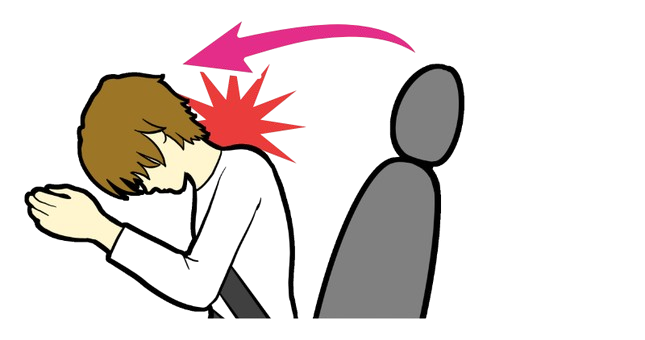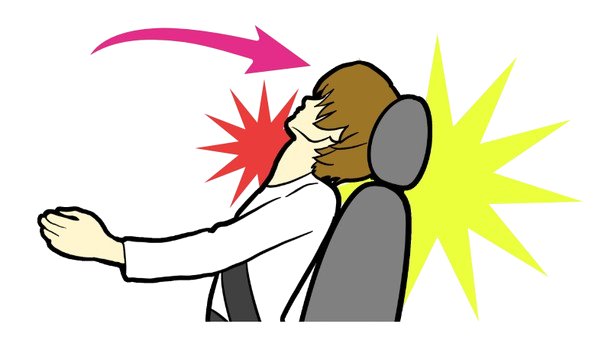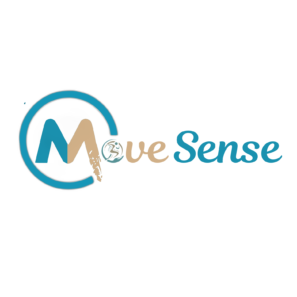Whiplash Headache
Whiplash Headache
Whiplash headache is a type of secondary headache that occurs as a result of a whiplash injury, typically from rapid back-and-forth movement of the neck, such as in a car accident. This type of headache is associated with neck injury and can vary in intensity and duration.
Characteristics
- Pain Quality: Can range from dull and aching to sharp and throbbing.
- Pain Location: Often starts at the base of the skull and can radiate to the forehead, temples, and shoulders.
- Onset: Usually develops within hours to days after the injury but can also be immediate.
- Duration: Can last for days, weeks, or even become chronic if not properly treated.
Causes
Whiplash headache is caused by the sudden acceleration-deceleration force that stretches and damages the soft tissues in the neck. This can lead to:
- Muscle Strain: Injury to the muscles and ligaments in the neck.
- Joint Dysfunction: Issues with the cervical spine joints.
- Nerve Irritation: Compression or irritation of the cervical nerves.
- Disc Injury: Damage to the intervertebral discs.
Diagnosis
Diagnosis typically involves:
- Medical History and Symptom Description: Detailed account of the injury and subsequent symptoms.
- Physical Examination: Assessing neck movement, pain points, and neurological function.
- Imaging Studies: X-rays, MRI, or CT scans to identify soft tissue damage, spinal misalignment, or disc injury.
Prevention
Preventive measures include:
- Proper Seatbelt Use: Wearing a seatbelt properly to minimize injury during accidents.
- Headrest Adjustment: Ensuring the headrest in the car is at the correct height to support the head.
- Neck Strengthening Exercises: Regular exercises to strengthen neck muscles and improve flexibility.
Proper management of whiplash headache involves a combination of medical treatment, physical therapy, and lifestyle adjustments to alleviate pain and promote healing.


What are the signs and symptoms of Whiplash Headache?
Whiplash injuries typically result in dysfunction of the bones, muscles, or ligaments in the cervical joints of the neck.
These injuries can cause headaches and migraines ranging from mild to severe, depending on the extent of the damage. Affected individuals may experience headaches and migraines localized to one side of the head or on both sides. Symptoms can also spread to the neck, shoulders, arms, and upper back.
In cases of severe injury, those with whiplash may develop Neck Tongue Syndrome (NTS), where significant trauma disturbs the upper three cervical vertebrae, potentially leading to ligament rupture, dislocation, or instability. NTS sufferers report numbness and tingling in one half of their tongue, along with pain in the neck and head regions.
Risk factors for developing headaches following head and/or neck trauma include:
- Previous history of headaches
- Less severe head and/or neck injury
- Being female
- Presence of comorbid psychiatric disorders
These factors, as identified by the International Headache Society, may increase the likelihood of experiencing headaches after such trauma.
- Need Assistance?
(07) 5619-5588
Varieties of Whiplash Headache
Headaches lasting under three months following a whiplash injury.
Headaches lasting over three months resulting from a whiplash injury.
How MoveSense will help you treat the Whiplash Headache?
Modern medicine advances quickly, making it challenging for anyone to stay current with all the research. Many practitioners still use outdated medical models to treat various types of headaches.
At MoveSense, we focus exclusively on treating headaches and migraines. We take pride in staying up-to-date with the latest research and applying the most effective treatments tailored to your needs.
We begin with a thorough examination of the upper cervical spine to assess the severity of your sensitized brainstem. If your brainstem is found to be hypersensitive and the cause of your Whiplash-Associated Headaches, we then implement specific treatments to safely and effectively desensitize it. We expect significant improvement to occur rapidly in 90% of our patients once treatment begins.

Varun Gautam
Headache and migraine specialist Physiotherapist
